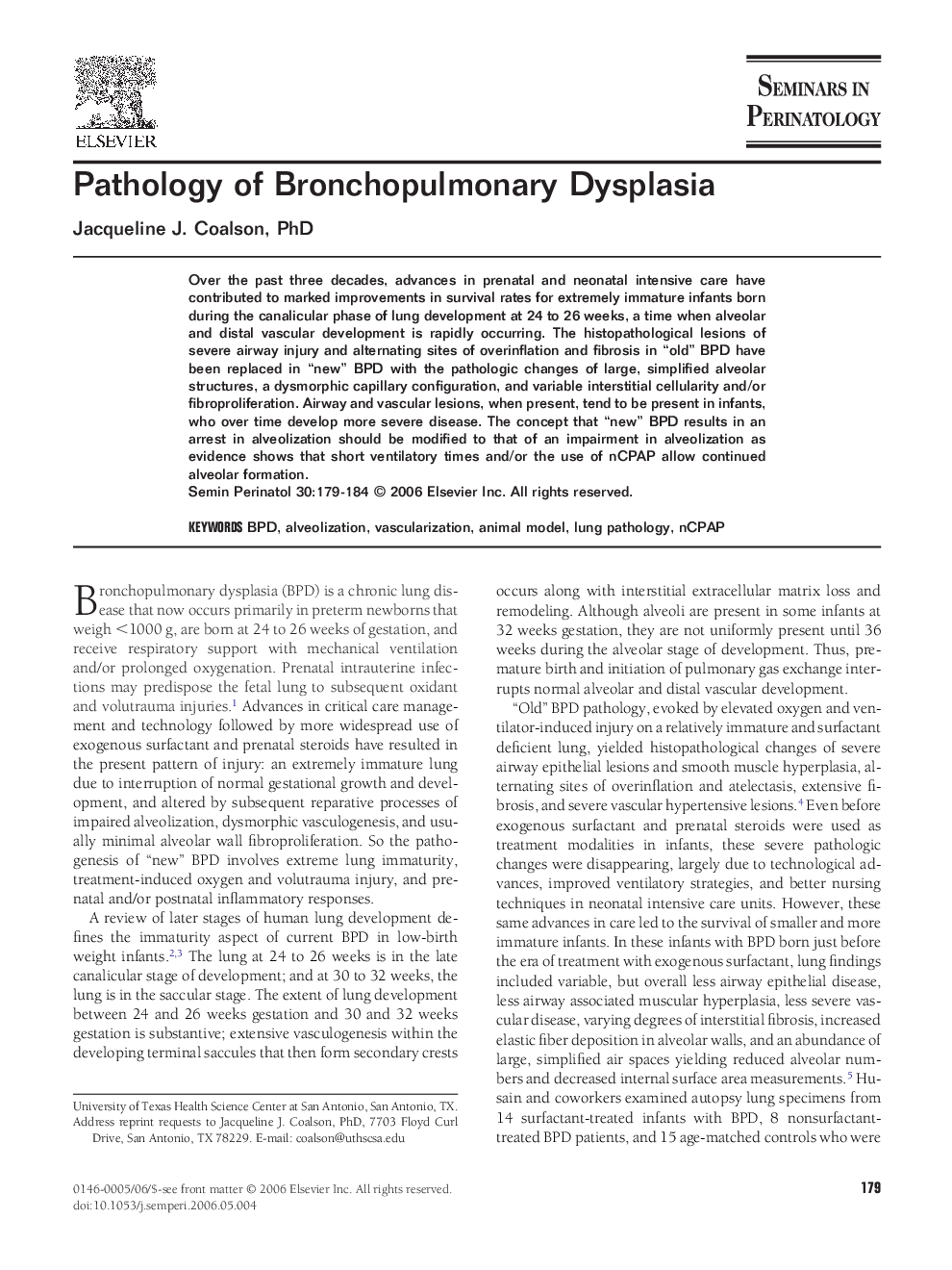| Article ID | Journal | Published Year | Pages | File Type |
|---|---|---|---|---|
| 3836995 | Seminars in Perinatology | 2006 | 6 Pages |
Over the past three decades, advances in prenatal and neonatal intensive care have contributed to marked improvements in survival rates for extremely immature infants born during the canalicular phase of lung development at 24 to 26 weeks, a time when alveolar and distal vascular development is rapidly occurring. The histopathological lesions of severe airway injury and alternating sites of overinflation and fibrosis in “old” BPD have been replaced in “new” BPD with the pathologic changes of large, simplified alveolar structures, a dysmorphic capillary configuration, and variable interstitial cellularity and/or fibroproliferation. Airway and vascular lesions, when present, tend to be present in infants, who over time develop more severe disease. The concept that “new” BPD results in an arrest in alveolization should be modified to that of an impairment in alveolization as evidence shows that short ventilatory times and/or the use of nCPAP allow continued alveolar formation.
